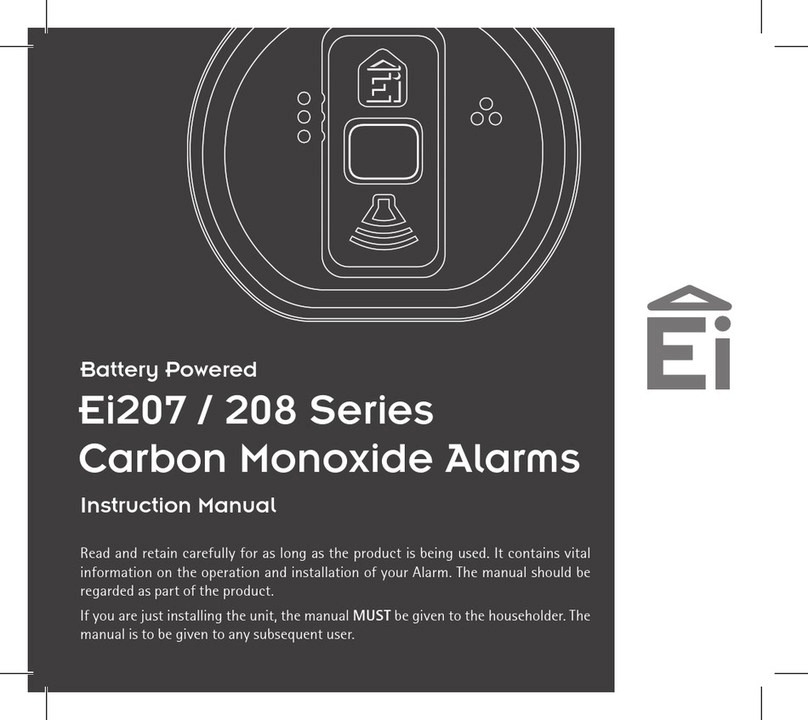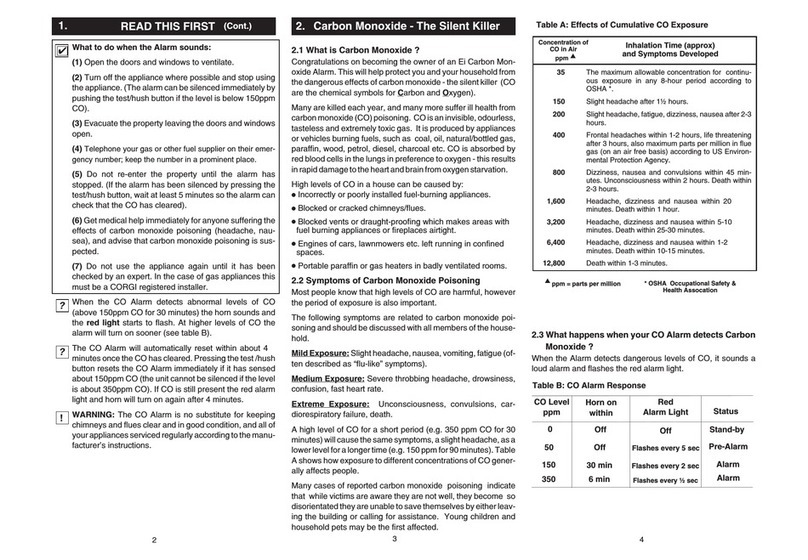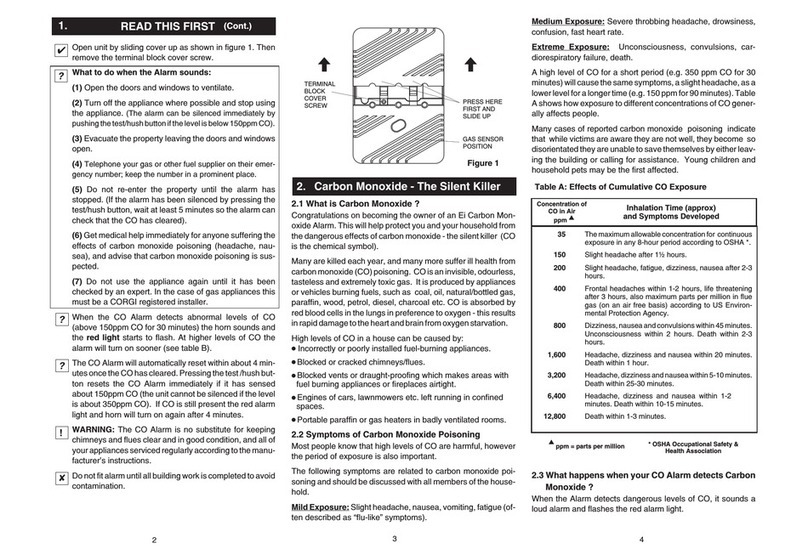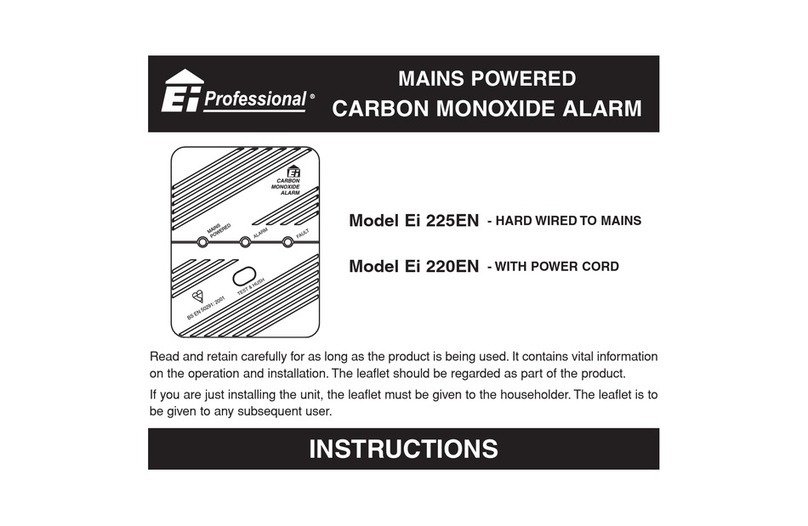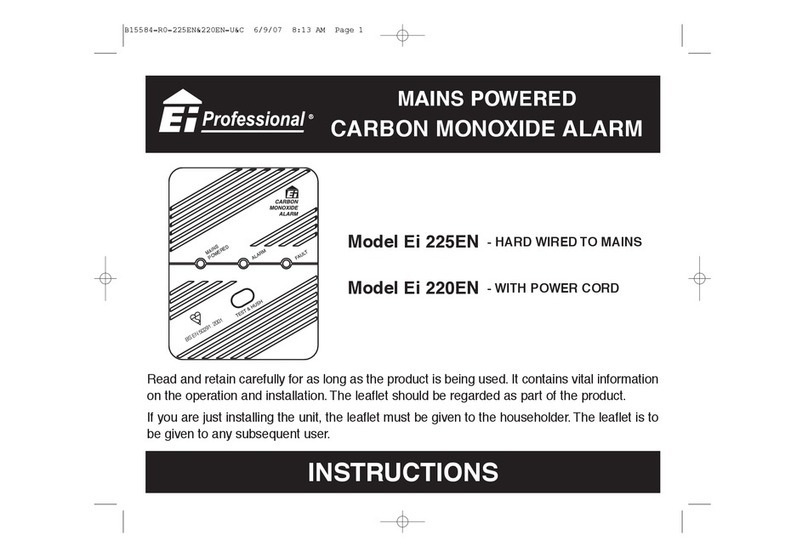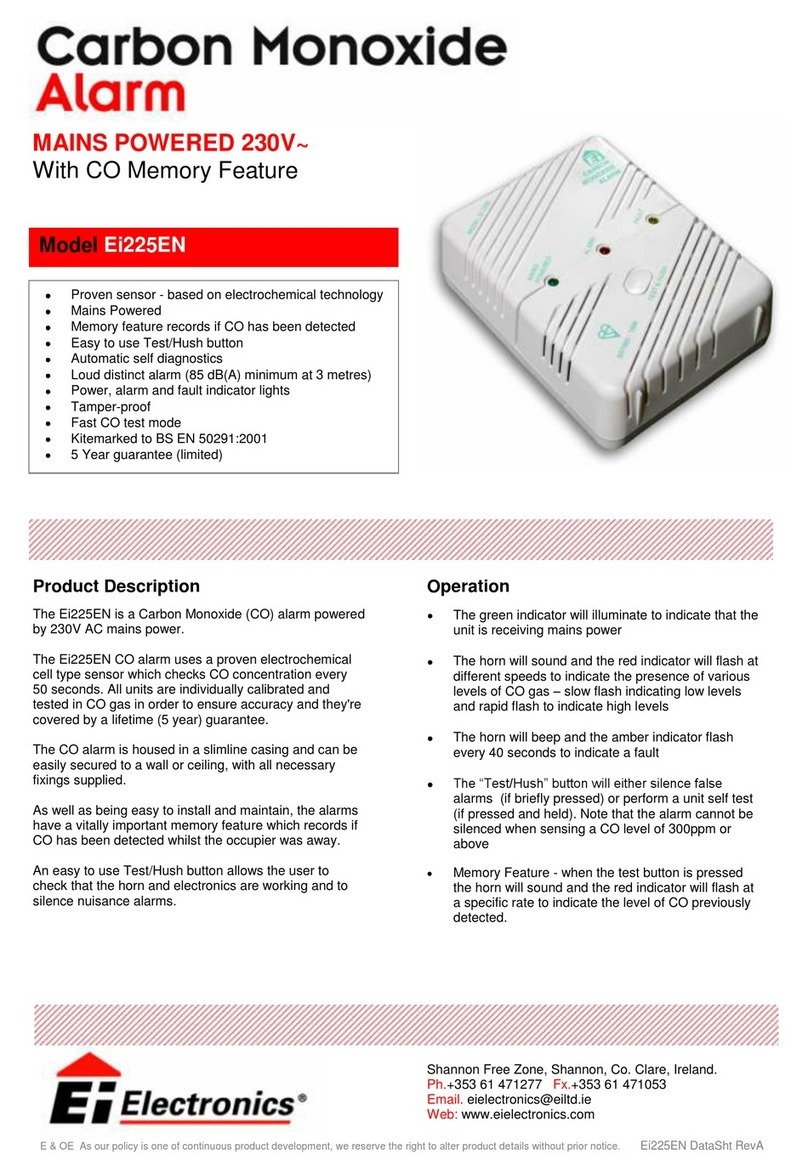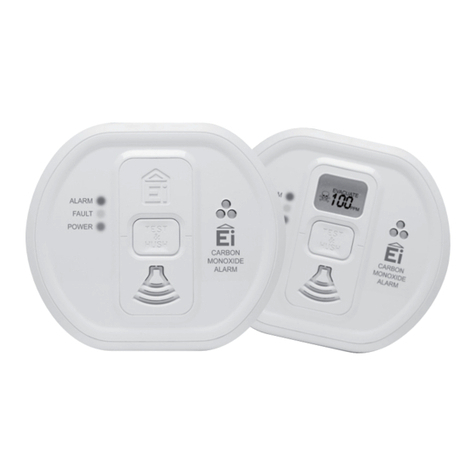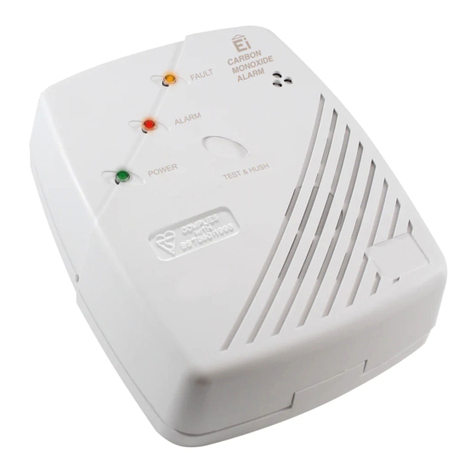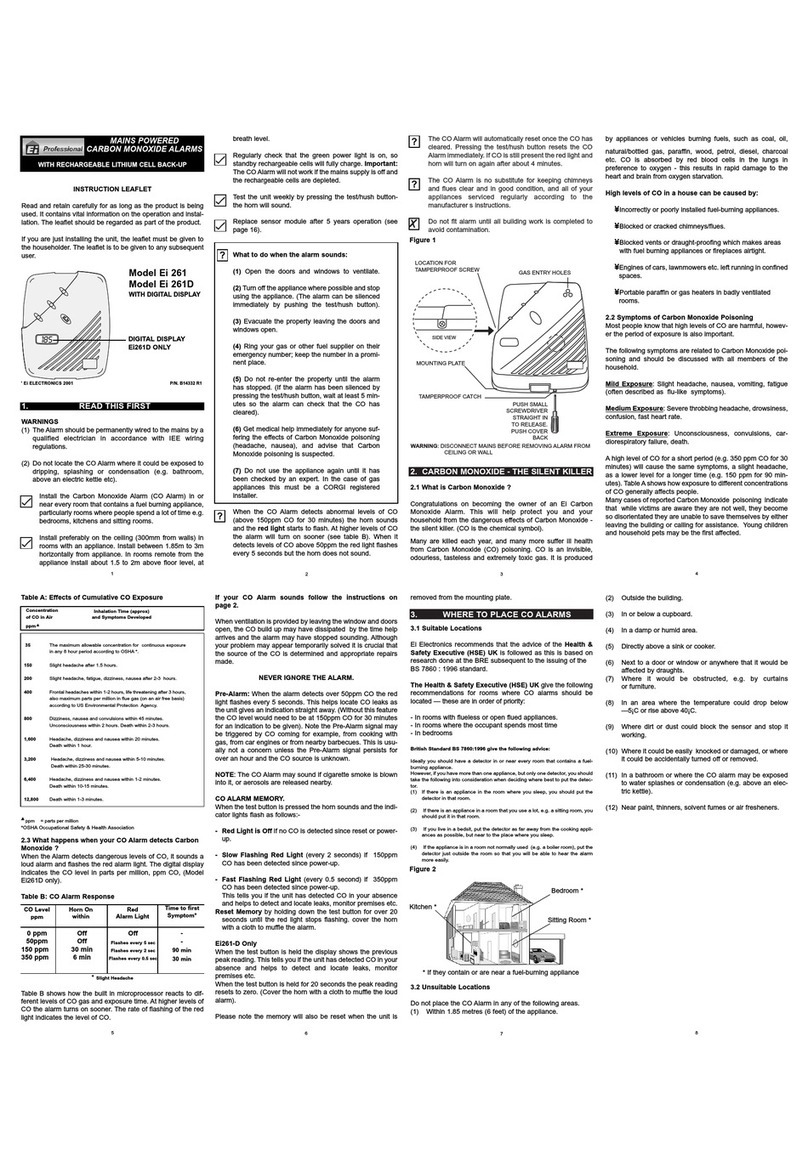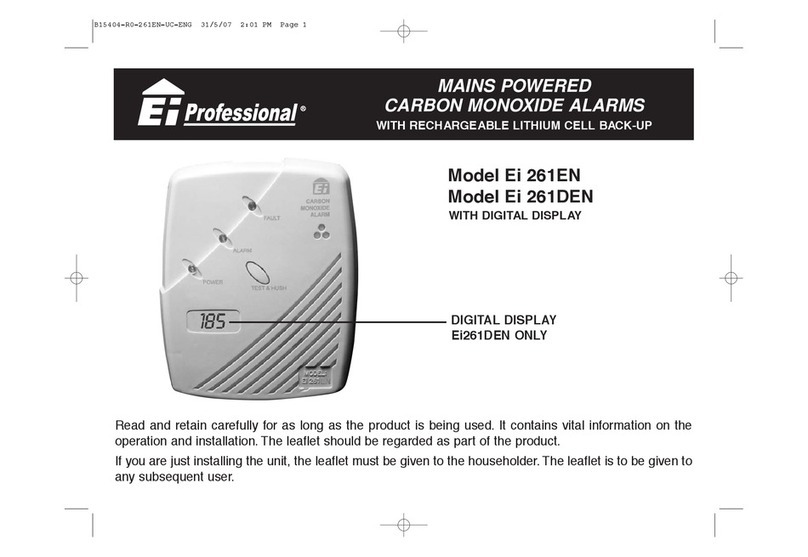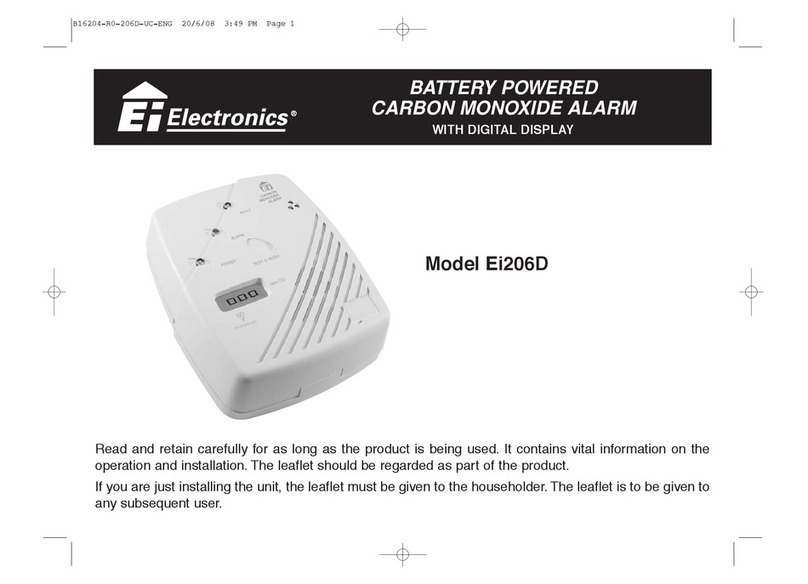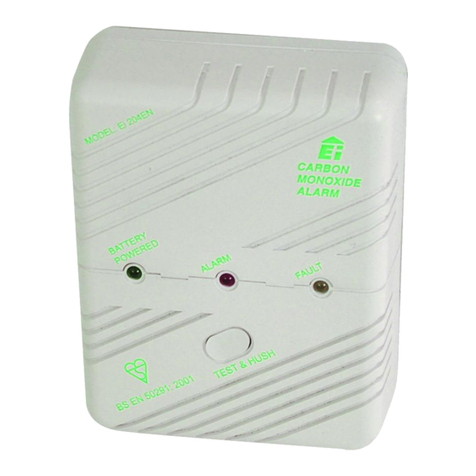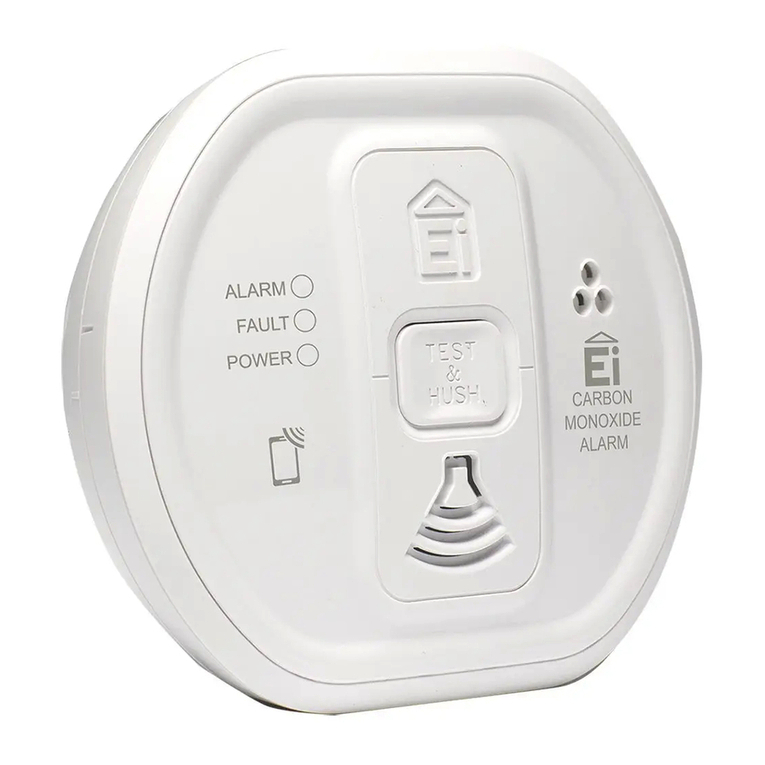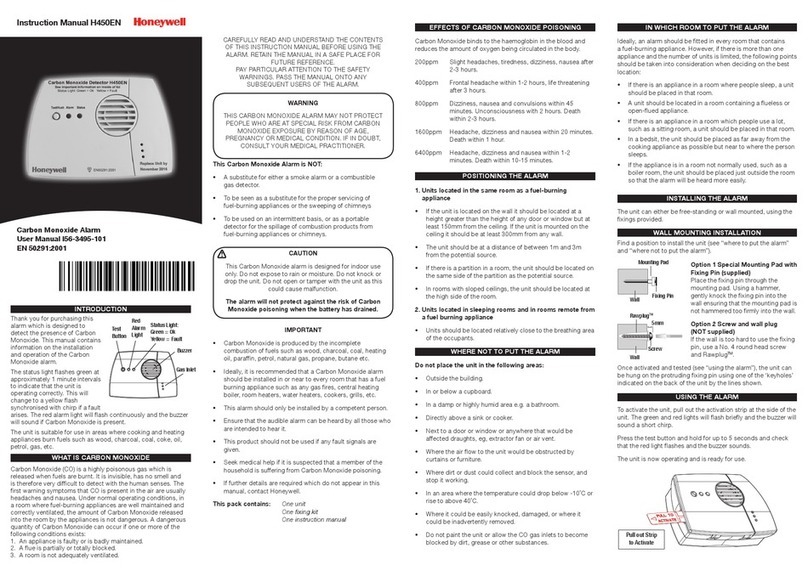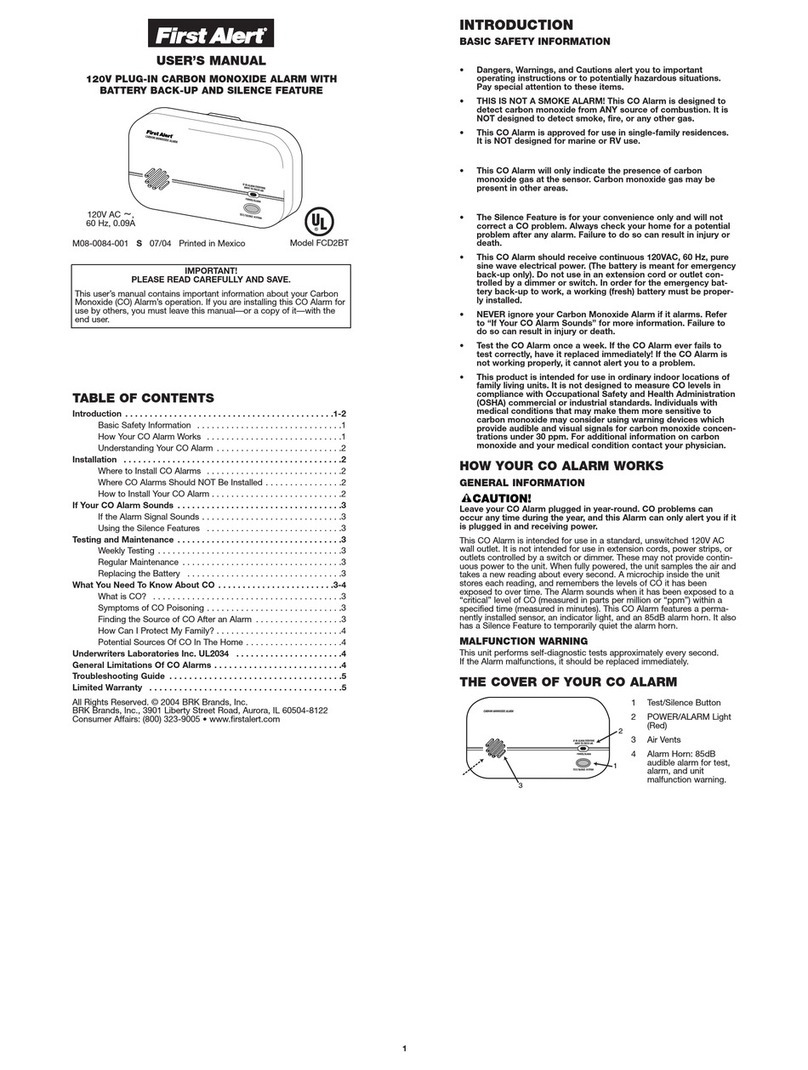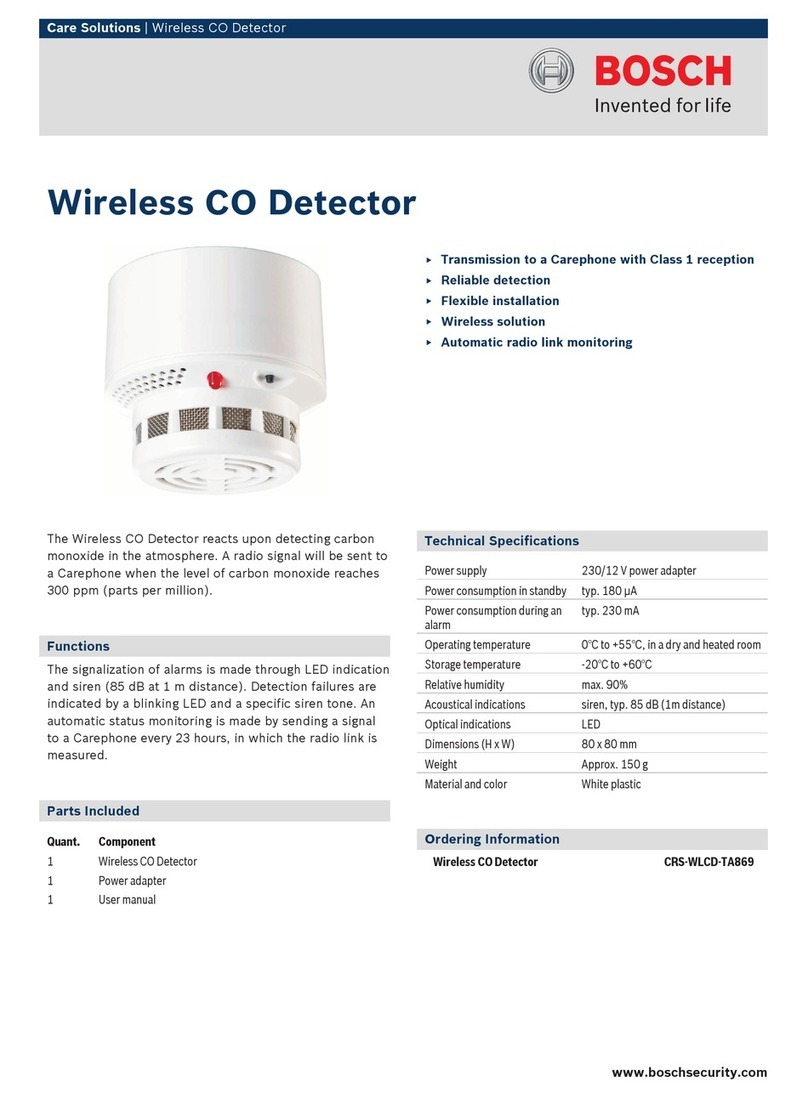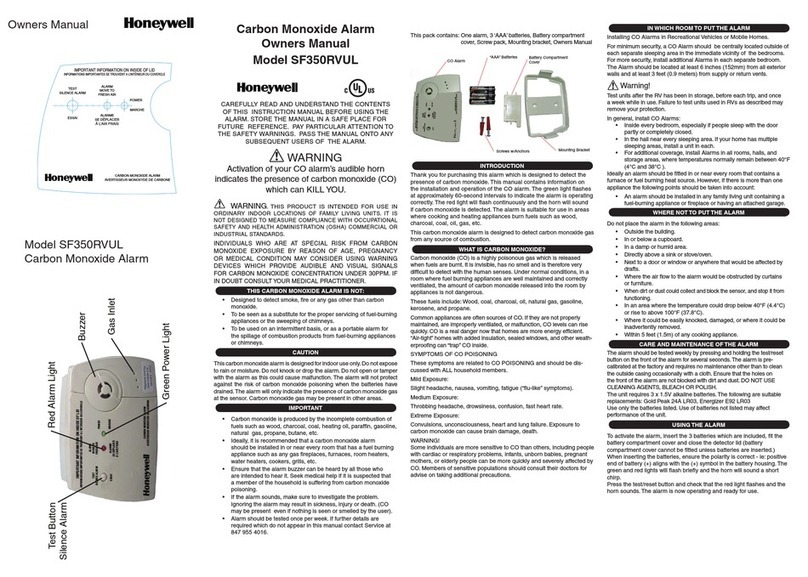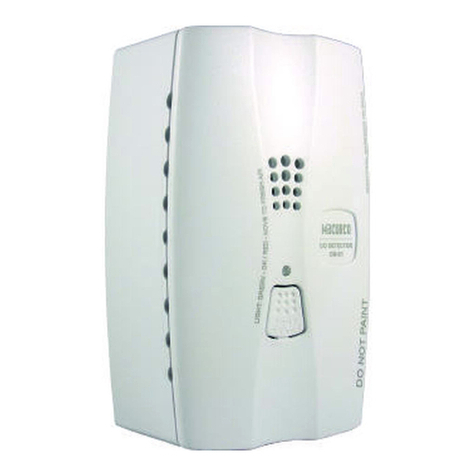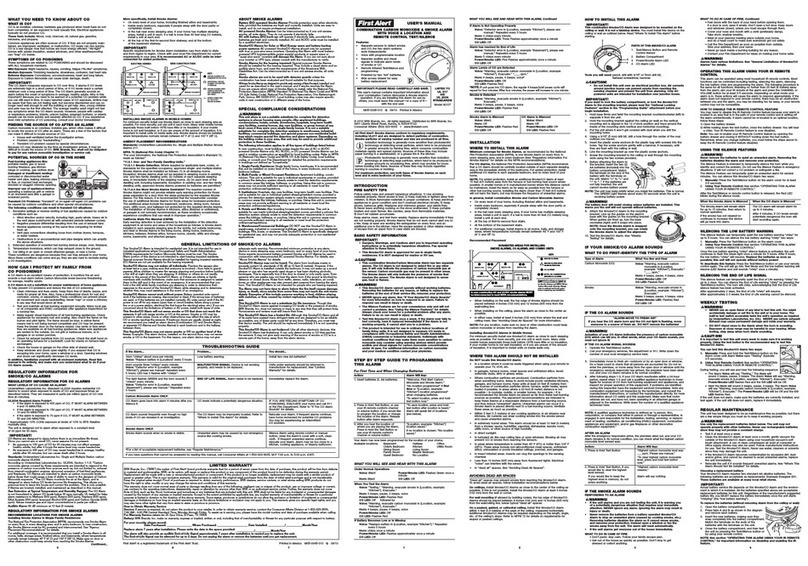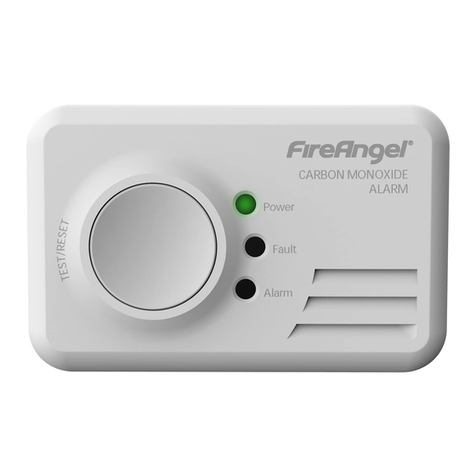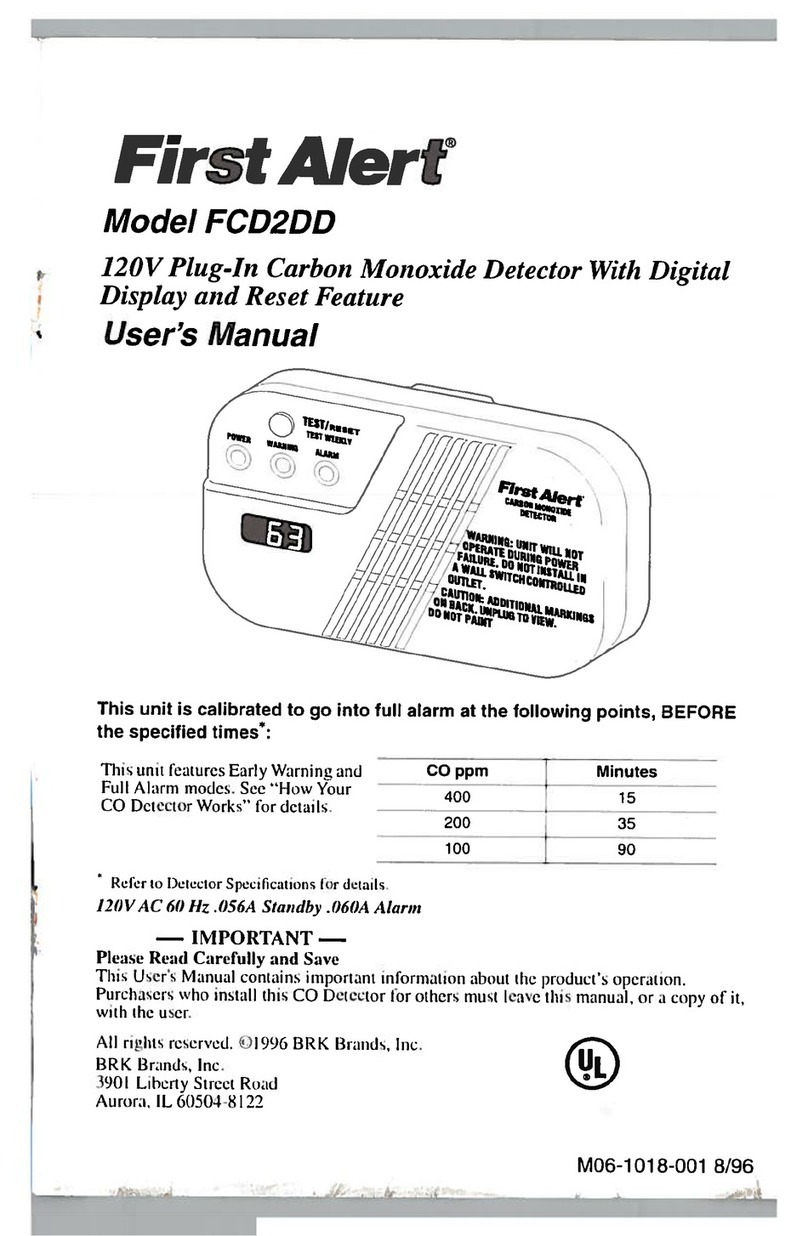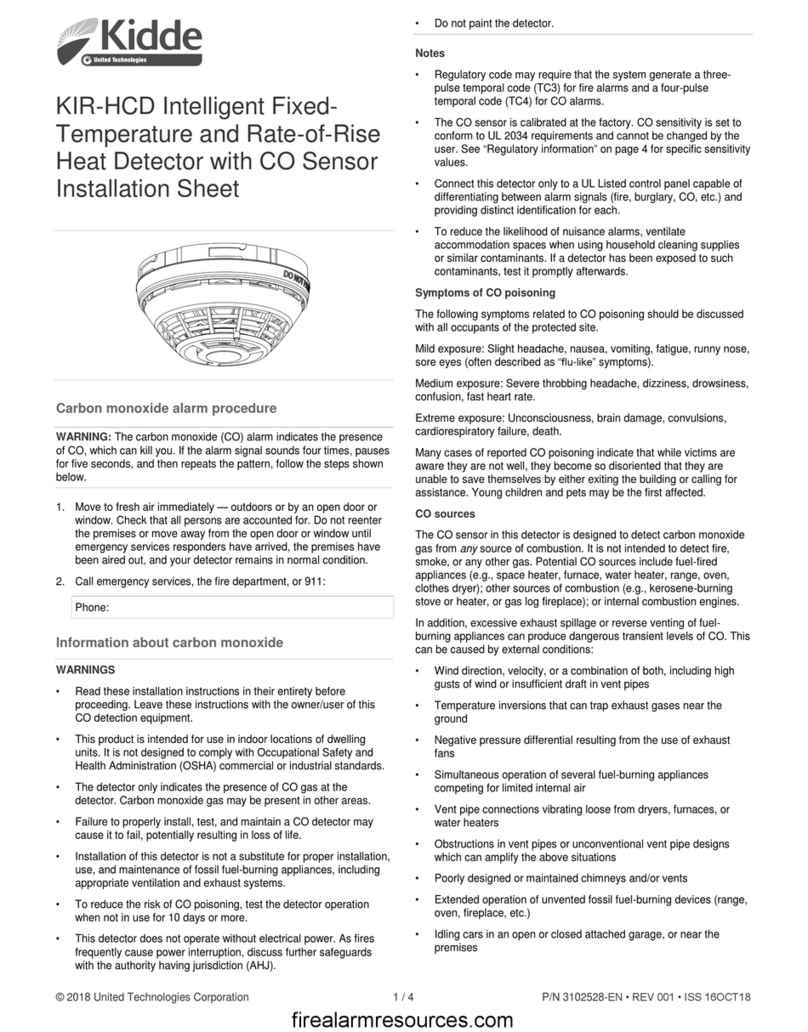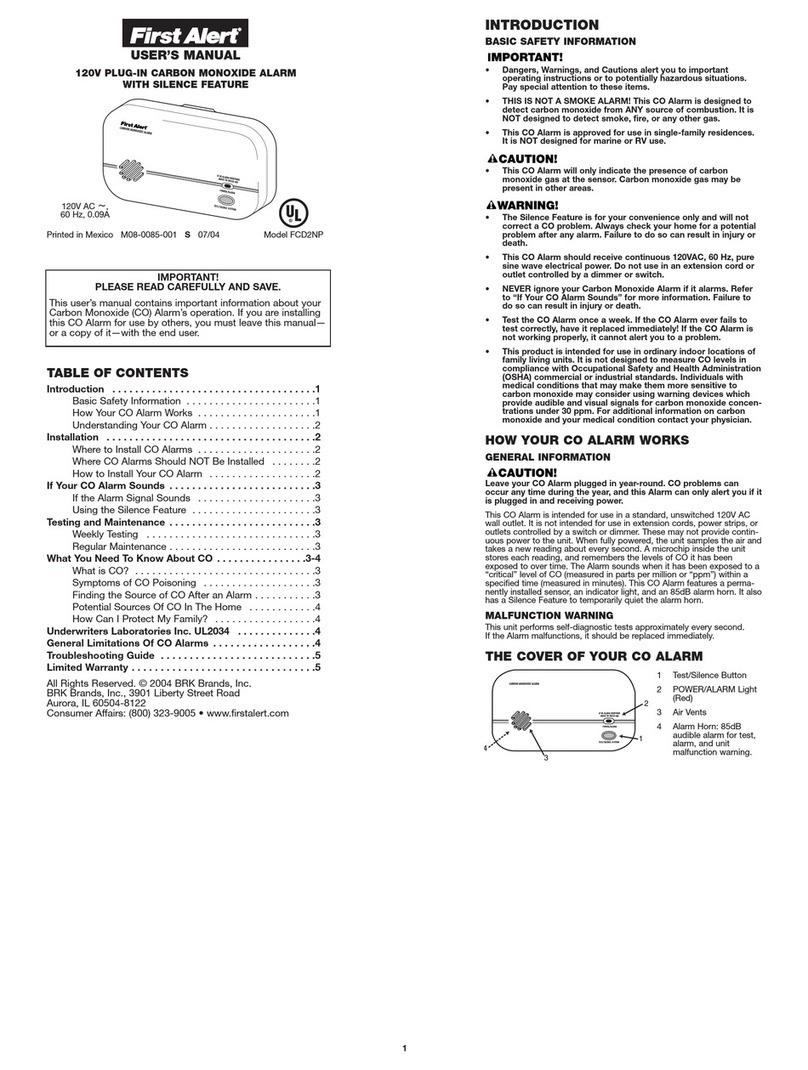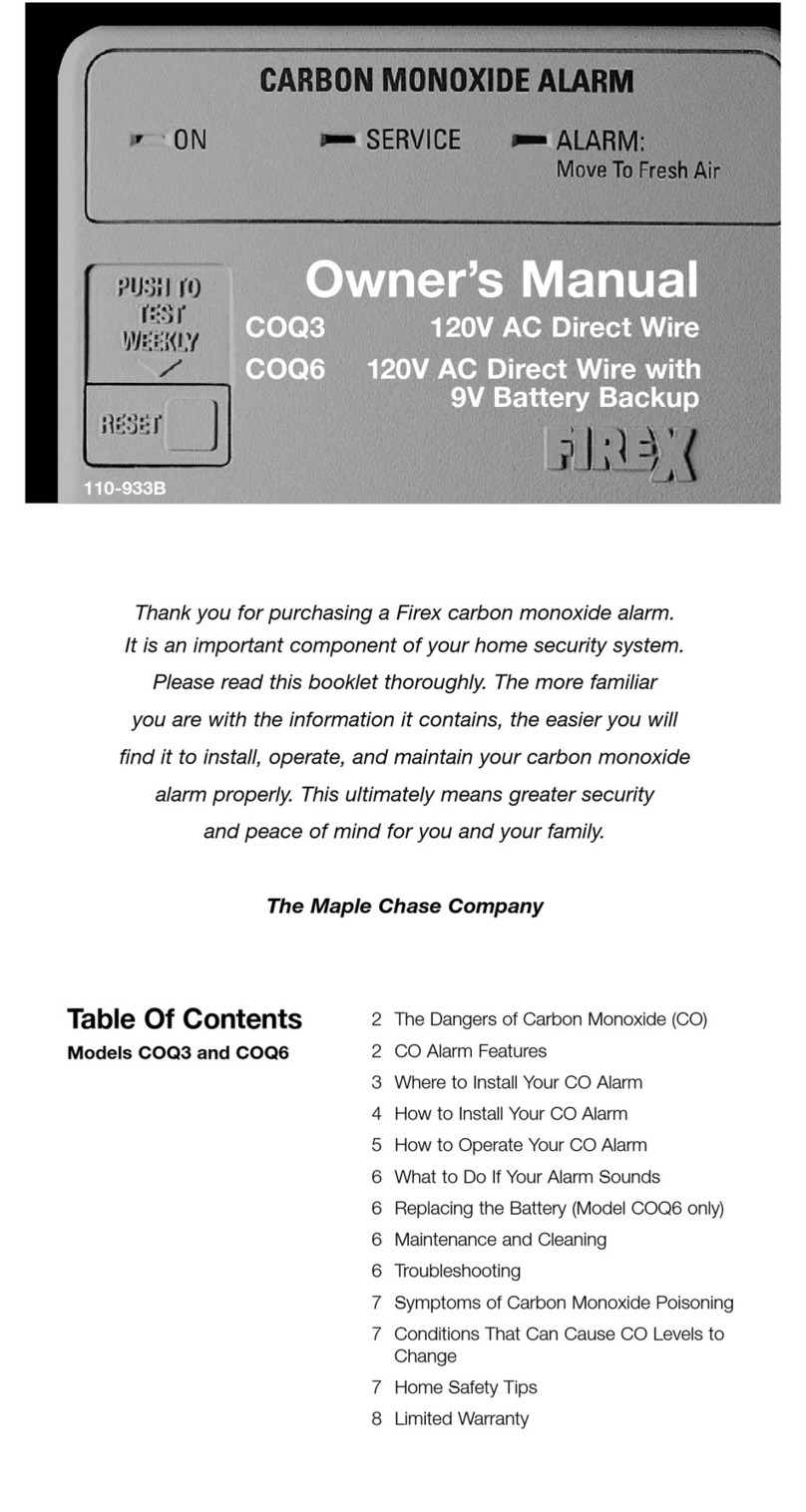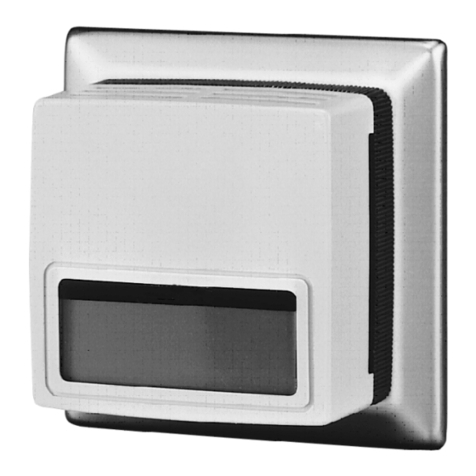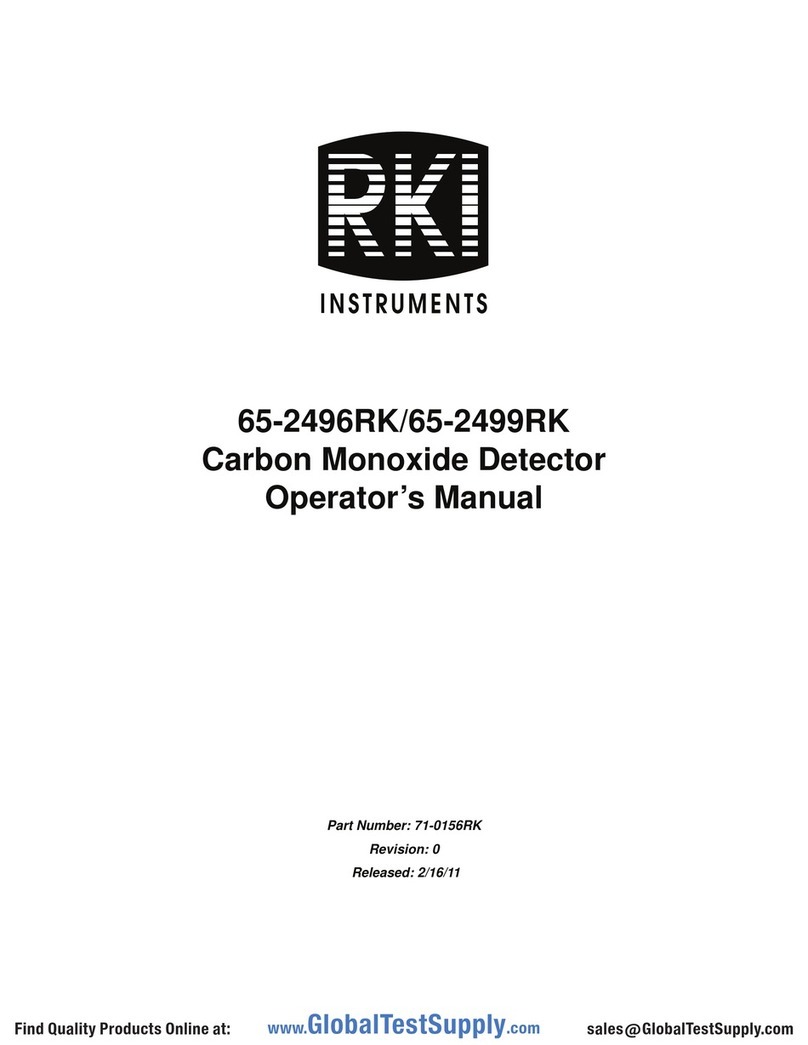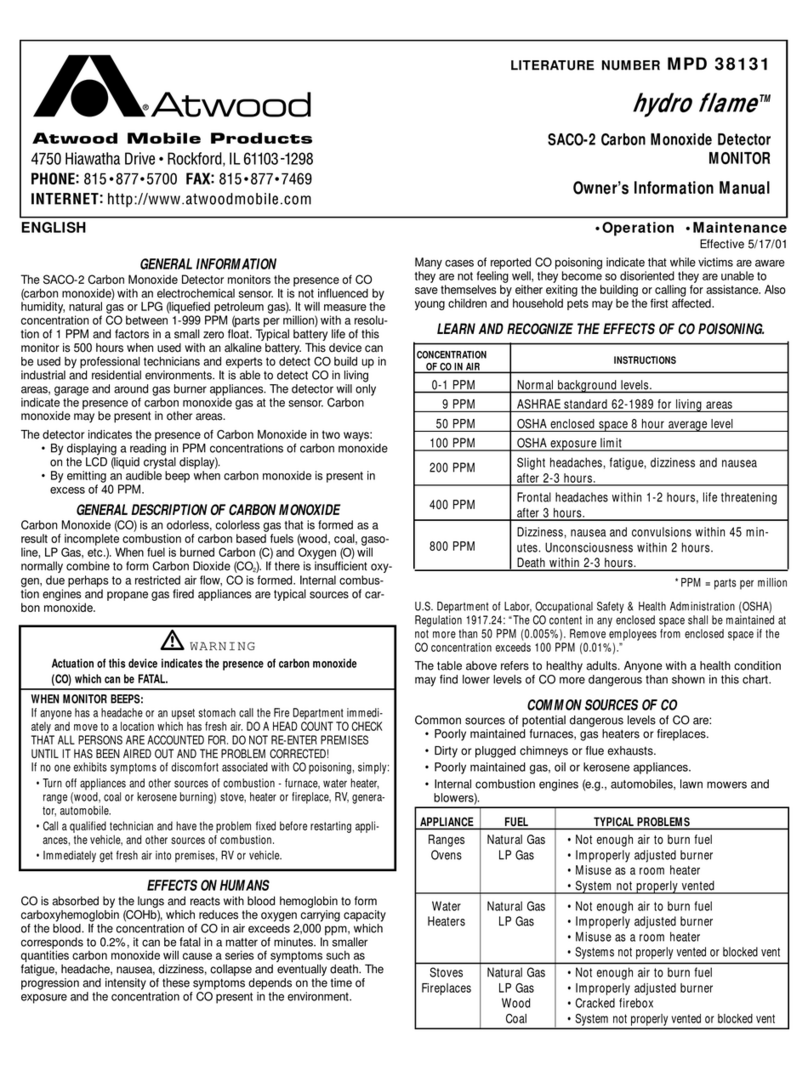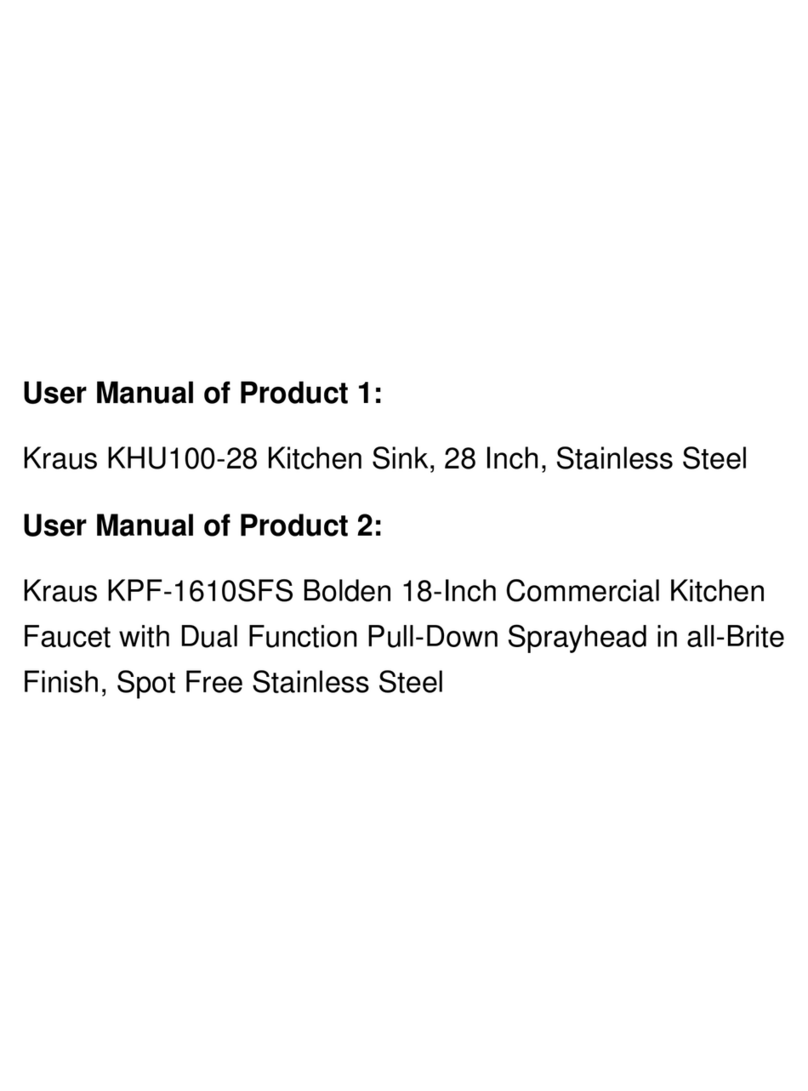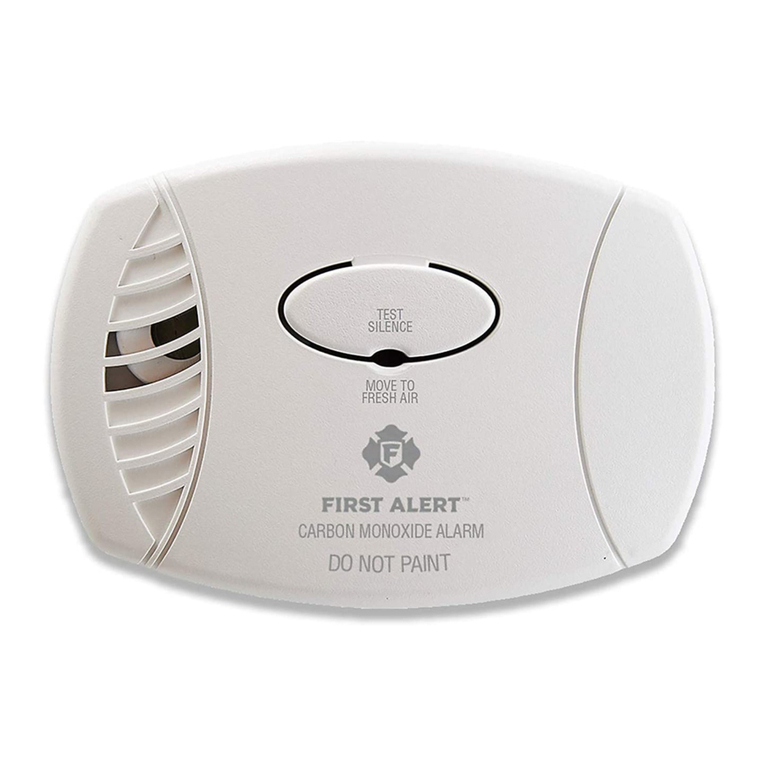2. CARBON MONOXIDE - THE SILENT KILLER
2.1 WHAT IS CARBON MONOXIDE ?
Congratulations on becoming the owner of an Ei Carbon Monoxide Alarm. This will help protect you and
your household from the dangerous effects of Carbon Monoxide - The Silent Killer. Many are killed each
year, and many more suffer ill health from Carbon Monoxide (CO) poisoning (CO is the chemical symbol,
indicating the molecule has one carbon atom and one oxygen atom). CO is an invisible, odourless, tasteless
and extremely toxic gas. It is produced by appliances and vehicles burning fuels, such as coal, oil,
natural/bottled gas, paraffin, wood, petrol, diesel, charcoal etc. CO is absorbed by red blood cells in the
lungs in preference to oxygen - this results in rapid damage to the heart and brain from oxygen starvation.
High levels of CO in a house can be caused by:
•Incorrectly or poorly installed fuel-burning appliances.
•Blocked or cracked chimneys/flues.
•Blocked vents or draught-proofing which makes areas with fuel burning appliances or fireplaces airtight.
•Engines of cars, lawnmowers etc. left running in confined spaces.
•Portable paraffin or gas heaters in badly ventilated rooms.
•Charcoal barbecues burning indoors.
2.2 SYMPTOMS OF CARBON MONOXIDE POISONING
Most people know that high levels of CO are harmful, however the period of exposure is also important.
A low level for a long period (e.g. 150 ppm for 90 minutes) can cause the same symptoms (a slight
headache) as a high level of CO for a short period (e.g. 350 ppm CO for 30 minutes). Table A shows how
exposure to different concentrations of CO generally affects people.
5
B16587-R0-262-UC-ENG 15/4/09 3:38 PM Page 5
